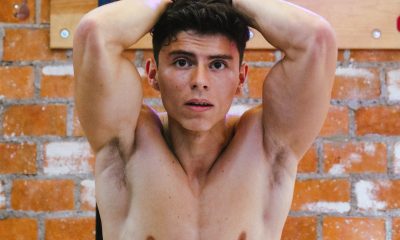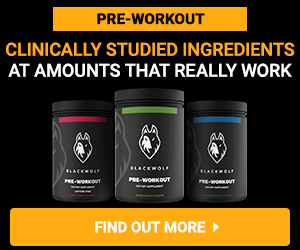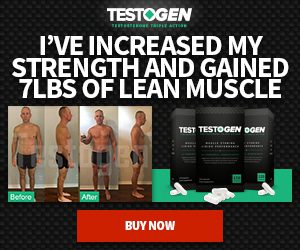Nutrition
Best Diet Plan for Bodybuilders 2019
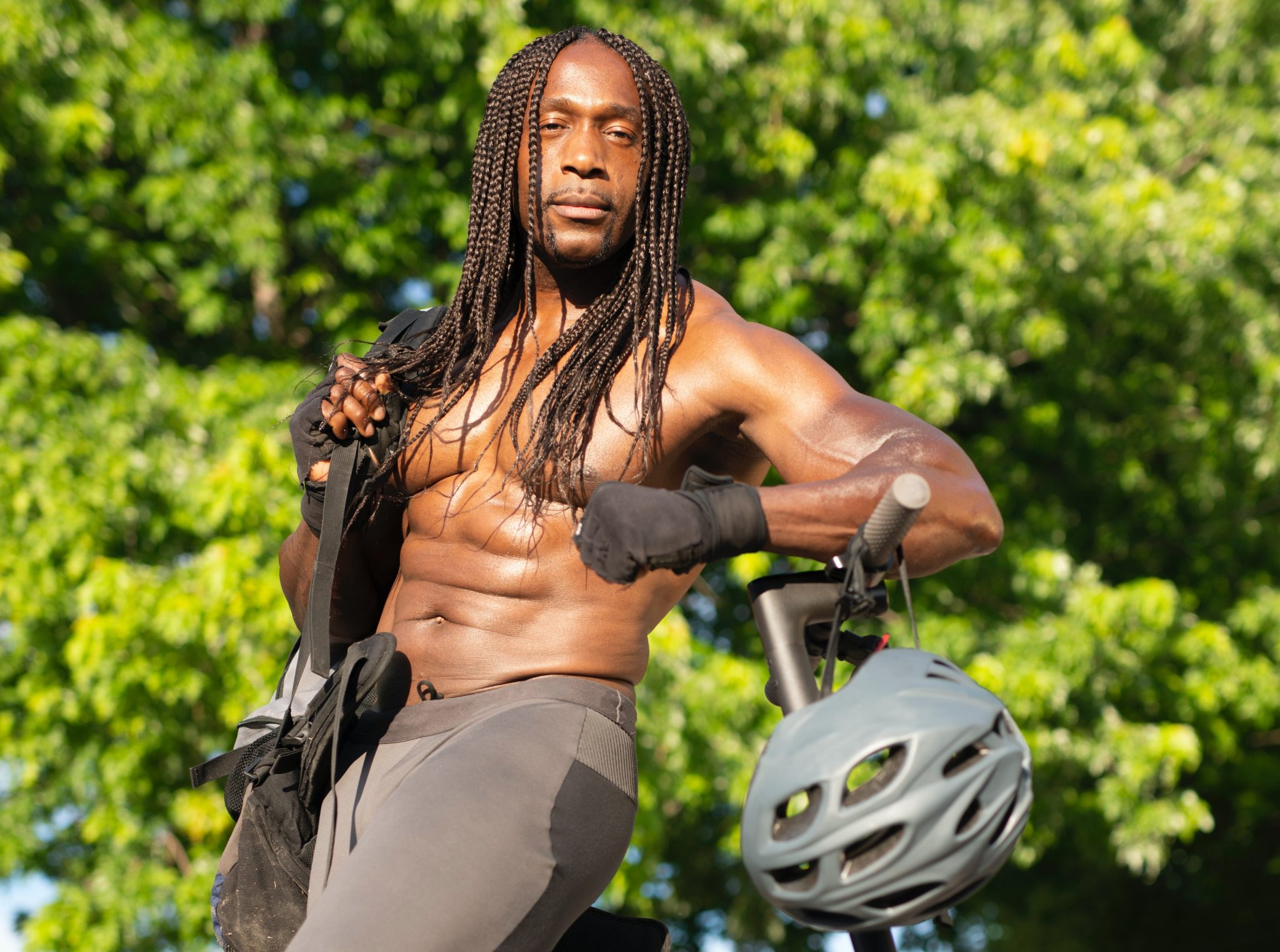
Best Diet Plan for Beginners
It really matters to eat right after you get up. Skipping first meal can set you up for overeating later in the day and you want to aim for a breakfast that combines good carbs and fiber with some protein. Take a look at this Diet Plan for Beginners bellow.
Week 1 |
Time |
Monday |
Tuesday |
Wednesday |
Thursday |
Friday |
Saturday |
Sunday |
Meal 1(Breakfast) |
7-9h | Cereal(100g), a glass of low-fat yogurt or milk. | Low-fat yogurt, rye bread with honey (1 slice), protein shake | Rye bread (1 slice) with low-fat yogurt and 1 egg. | Oatmeal, wheat germ(80g), low-fat yogurt | Blend together: 1cup milk 1tbs protein powder, 1 cup frozen strawberries, cashews-30g | Peanut butter or almond butter on rye toast(2 slices) with some juice. | Salad(cucumber, pickle, tomato, whatever you want) and wheat germ bread(1 slice) |
Meal 2(Lunch) |
12-13h | Soup, White boiled meat( 100g) with salad(green salad, tomatoes, cucumbers) | Any kind of boiled meat(100g)with potatoes(70-100g), salad( your choice) | Brussels Sprout Salad and grilled chicken(100-200g) | Roasted fish with rice(80g) | Any kind of boiled or roasted meat with potato. | Combine potato, tomato with low-fat cheese and steak | Kale salad with salmon and avocado(You can eat a lot of it, it’s low calories) |
Meal 3(Snack) |
17-18h | Coffee, after about 15 mins eat some fruits( half banana, kiwi, strawberries, etc.) about half of the volume of your fist. | When no training, take some omega 3 fats like almonds and hazels or just an apple. | Coffee, after 15 minutes eat boiled rice(100g) and peanuts or almonds(40-50g) | You can combine fruits and omega 3 fats like peanuts, almonds, and hazels. | When there is no training, take some peanut or an apple. | You can combine fruits and omega 3 fats like almonds and hazels. | When there is no training, take an apple. |
Workout |
Half to one hour after meal 3 | Weight training + crunches 12-10-8
5sets Barbell Rows 25x5 |
/ | Punching. 2min.
5-12 sets |
Pushups with squats and crunches. 10times,8sets | / | Swim(30m sprint,20m
Slow)x10 |
/ |
Meal 4 |
Before 20h and earlier | Half banana after a workout, then white meat(150g) and cucumbers. | Light protein meal with veggies. Your choice. | 50g of fruits.
Few grams of cereal and 5 egg whites. |
Boiled rice(150g) and boiled beef(150g) | Cucumbers, low-fat cheese or yogurt. | Broccoli, veggies and light meat(200g) | Light protein meal(yogurt, cheese, egg whites, veggies |
Week 2 |
Time |
Monday |
Tuesday |
Wednesday |
Thursday |
Friday |
Saturday |
Sunday |
Meal 1(Breakfast) |
7-9h | 2 scoops
Protein 50g OATS WITH SPLENDA AND CINNAMON 1/2 cup |
Oatmeal with Fresh or Frozen (No Sugar Added) Fruit
|
Peanut butter or almond butter on rye toast(2 slices) with some juice. | Egg White Omelet
Hash Browns Bowl of Blueberries |
Hot Whole-Grain Cereal with Blueberries
Tea or Coffee |
Fresh Fruit
Yogurt hole-Grain Bagel, Toasted Fat-Free Cream Cheese |
Low fat yogurt, rye bread with honey (1 slice), protein shake(need it cause of last evening workout) |
Meal 2(Lunch) |
12-13h | 99% LEAN GROUND TURKEY
6 oz BROCCOLI 1 cup, ALMONDS 1/4 cup |
1 steamed 6-inch corn tortilla with fresh or grilled vegetables (such as onions, green bell peppers, and tomatoes) | Baked Potato with 2 Tables Fat-Free Sour Cream and a Sprinkling of Chiv., Scallions | Big Handful of Grapes | 1 Cup Diced Fresh Fruit
1 Snack Bag of Baby Carrots |
Chicken with Cherry Tomatoes | 2 Cups Mixed Greens with 1 Cup of Other Veggies, Chopped, Dressed with Aged Balsamic Vinegar |
Meal 3(Snack) |
17-18h | YAMS
8 oz, peanut butter |
Take an apple, some fruit or salad with 100g of white meat | combine fruits and omega 3 fats like almonds and hazels | Turkey Sandwich | 1 Cottage Cheese and Fruit | Brown Rice(100g) | Sweet Potato |
Workout |
Half to one hour after meal 3 | Weight training + crunches 12-10-8
5sets Barbell Rows 25x5 |
/ | BARBELL BENCH PRESS - MEDIUM GRIP
5 sets of 15, 12,10,10,10 reps |
Pushups with squats and crunches. 10times,8sets | / | INCLINE DUMBBELL PRESS
4 Sets 12,10,10,8 reps |
/ |
Meal 4 |
Before 20h and earlier | SALMON
6 oz fresh grilled BROCCOLI 1 cup
|
6 Ounces of Nonfat Plain or No-Sugar-Added Yogurt with Your Choice of Berries Swirled Throughout | Light protein meal(yogurt, cheese, egg whites, veggies | Boiled rice(150g) and boiled beef(150g) | Ear of Corn, some meat | Spinach Salad | 1 cup frozen strawberry nonfat sugar-free yogurt |
Week 3 |
Time |
Monday |
Tuesday |
Wednesday |
Thursday |
Friday |
Saturday |
Sunday |
Meal 1(Breakfast) |
7-9h | 1 Cup Fresh Fruit
1 Cup Nonfat Plain or Nonfat, No-Sugar-Added Yogurt Whole-Grain Bagel, Toasted. Top with Fat-Free Cream Cheese or Nonfat Ricotta Cheese and Fresh Sliced Strawberries |
Peanut butter or almond butter on rye toast(2 slices) with some juice. | 6 egg whites
1 package of spinach |
1/2 cup oatmeal made with water
6 egg whites cooked with 1 yolk 1-piece of fruit |
1-cup whole-grain cereal
1-cup 1% milk 1 piece of fruit 1 Tbsp. peanut butter |
1/2 cup oatmeal made with water
7 egg whites cooked with 1 yolk 1/2 cup strawberries |
Protein shake made30-40 g whey protein and 1 cup berries, yogurt, salad |
Meal 2(Lunch) |
12-13h | to 2 Cups of Veggie-Rich, Bean-Rich Low-Sodium Soup, such as
Red Bean and Leftover Veggie Soup |
Butter Beans With Lemon and Scallions | 1 scoop of 100% Whey
1 cup of skim milk serving of KASHI GO LEANCruncH |
4 slices of lean turkey
1/2 cup of grapes |
Brussels Sprout salad and grilled chicken(100-200g) | Whitefish Fillet
tsp of vanilla extract lemon juice |
1 cup green veggies
8 oz. chicken breast |
Meal 3(Snack) |
17-18h | Tuna Sandwich, boiled rice | 4 slices of lean turkey
1/2 cup of grapes |
1/4 cup of Quaker Oats
1/2 cup of skim milk, take some fruit |
1 cup green veggies
6 oz. lean steak Large baked potato with skin |
Low-carb, low-sugar protein bar | 4 slices of lean turkey
1/2 cup of grapes |
Large baked potato with skin (3-4" in diameter)
1 cup green veggies 6 oz. chicken breast |
Workout |
Half to one hour after meal 3 | BUTTERFLY
4 Sets 12,12,12,12 reps |
/ | LEG EXTENSIONS
5 Sets 15,12,12,10,10 reps |
BARBELL SQUAT
5 Sets 20,15,12,10,10 reps |
/ | Swim(30m sprint,20m
Slow)x10 |
/ |
Meal 4 |
Before 20h and earlier | Sweet Potato
Salad with Honey Mustard Dressing |
Curried Quinoa and Tofu | Easy Tangy Salmon
Soba Noodles With Spicy Cucumbers |
4oz. Chicken Breast
1/4 cup of sliced almonds |
Omelet made with 8 egg whites and 1 yolk, cooked with 1/2 cup broccoli | 16-oz. can tuna (in spring water) made with
6-8 stalks asparagus |
Protein shake made w/ 30-40 g whey protein |
Week 4 |
Time |
Monday |
Tuesday |
Wednesday |
Thursday |
Friday |
Saturday |
Sunday |
Meal 1(Breakfast) |
7-9h | Oatmeal with Fresh or Frozen (No Sugar Added) Fruit + yogurt | Greek yogurt
Raspberries, Granola, Eggs |
Protein powder,
Coconut milk, Cherries, flaxseeds, ice, water (smoothie) |
Egg Whites
4 Cheese (Cheddar) Scallions 2 Apple 1 |
Protein Powder
Blueberries1 cup Almonds 1 oz.
|
Oatmeal, wheat germ(150+g), low-fat yogurt or low-fat high protein cheese | Blend together: 1cup milk 1tbs protein powder, 1 cup frozen strawberries, cashews-30g |
Meal 2(Lunch) |
12-13h | Lettuce, ground beef, tomato, red onion, mayo, green beans | Brussels Sprout salad and grilled chicken(100-200g) | Steak
(Grilled flank steak) 6oz. Chickpeas, cucumber |
4 slices of lean turkey
1/2 cup of grapes |
Tilapia, parmesan cheese, yams, broccoli, butter | 1 cup Men's.soup
1 can of tuna(canned in water)2 tbsp. low fat mayo |
Brussels, Sprout salad, TOFU (high protein food), pasta |
Meal 3(Snack) |
17-18h | Coffee, after about 15 mins eat some fruits( half banana, kiwi, strawberries,etc.) about half of the volume of your fist. | 4 slices of lean turkey
1/2 cup of grapes |
Banana, fruits, any kind of carbs. Intense training=sugars
|
Combine fruits and omega 3 fats like peanuts, almonds, and hazels. | When there is no training, take some peanut or an apple.
|
Take a piece of cake or pancakes, sugars
Banana is awesome. |
Some light protein meal with few carbs. |
Workout |
Half to one hour after meal 3 | Weight training + crunches 12-10-8
5sets Barbell Rows 25x5 |
/ | Punching. 2min.
5-12 sets |
Pushups with squats and crunches. 10times,8sets | / | Swim(30m sprint,20m
Slow)x10 |
/ |
Meal 4 |
Before 20h and earlier | Whitefish Fillet
tsp of vanilla extract lemon juice |
Chicken 6oz, quinoa salad, walnuts, craisins
|
. Protein Bar
(Recovery Shake.) |
Shrimp
Brown rice |
Boiled rice(150g) and boiled beef(150g) | Spinach
Feta cheese, Bell Pepper
|
pound cooked shrimp
½ bag mixed frozen stir-fry vegetables |
Week 5 |
Time |
Monday |
Tuesday |
Wednesday |
Thursday |
Friday |
Saturday |
Sunday |
Meal 1(Breakfast) |
7-9h | Egg whites, oatmeal, veggies | Eggs 3
Cheese (Pepper Jack) Spinach 1cup Peach |
1 slice whole-grain bread
1/4 medium avocado 1 large egg, cooked in 1/4 tsp. olive oil Top egg with a pinch of pepper clementine |
1 cup all-bran cereal
3/4-cup skim milk 1/2 cup blueberries |
Oatmeal with Fresh or Frozen (No Sugar Added) Fruit+ yogurt | Baked salmon & eggs | Protein shake, milk, toasted bread |
Meal 2(Lunch) |
12-13h | 4 slices of lean turkey
1/2 cup of grapes |
1 pound cooked shrimp
1 bag mixed frozen stir-fry vegetables |
Brussels, Sprout salad, TOFU (high protein food), pasta | Roasted fish with rice(100+g) or pasta | 1 steamed 6-inch corn
tortilla with fresh or grilled vegetables (such as onions, green bell peppers, and tomatoes) |
7 oz. lean steak
6-8 stalks asparagus |
Kale salad with salmon and avocado(You can eat a lot of it, it’s low calories) + meet(your ch.) |
Meal 3(Snack) |
17-18h | Coffee, sugars and a little bit of peanut. | Light protein with veggies | Fruit and Yogurt | Hazels, sweet potato or oatmeal | When there is no training, take some peanut or an apple.
|
Hazels, peanut, coffee | When there is no training, take an apple. |
Workout |
Half to one hour after meal 3 | Weight training + crunches 12-10-8
5sets Barbell Rows 25x5 |
/ | Punching. 2min.
5-12 sets |
Pushups with squats and crunches. 10times,8sets | / | Swim(30m sprint,20m
Slow)x10 |
/ |
Meal 4 |
Before 20h and earlier | Boiled rice(150g) and boiled beef(150g) | Take protein powder with yogurt | Half banana after the workout, pasta or rice and veggies with beans. | Whitefish Fillet
tsp of vanilla extract lemon juice |
Protein with yogurt, milk or juice. | Boiled rice(200+g) with beans | Boiled chicken or beef with veggies. |
Here is the 30-day challenge that I copied from one of my fallowing instructors on the internet. He says it’s good to change weight during this challenge.
- Don’t skip meals.
- Eat more frequently.
- Go for home-made foods.
- Stock healthy foods in your kitchen and refrigerator.
- Include all food groups in your diet plan.
- Choose smaller plates and bowls, this helps in eating less.
- Have some food at home before leaving for any party.
- Avoid added sugar as well as salt.
- Add fruits and vegetables to your dishes whenever possible.
- Avoid zero carb or restricted diet plans.

*Protein shake cannot replace full breakfast meal. You have to eat carbs because you need to refill the glycogen after the cardio. You can mix your protein with yogurt or milk to have a better effect. Add your protein shake on every breakfast. When you don’t do training in the mornings, you can just have your protein shake and that’s it.
Gold Rules:
Before cardio in the morning, you should drink lemonade without sugar or honey. Just pure lemonade. More lemon, less water. It’s going to refresh you. If you feel like you could do a 10minute cardio before you eat your breakfast, do it. That is going to speed up your metabolism. Cardio could be jogging, squats and pushups, punching, whatever you like to do. Personally, I do not consume cardio before breakfast because it makes me feel a little bit dizzy.
Must Read:: The Do’s And Don’ts Of Low And High-Intensity Cardio
Lunch has to be high protein meal with a little bit of omega 3 fats (these improving your brain functioning) and few grams of carbs. Eat fewer calories on your non-training days because you won’t be able to burn them. After about 4 hours after lunch, you should eat your (Meal 3/ Snack).
Must Read:: 4 Meals with Most Protein to Take If You are Body Builder
It has to contain more carbs or fats because you need them to maintain energy through the workout.*Because your training is in the morning, you should fallow training day nutrition plan(just for meal 3-snack) like Tuesday, Friday, and Sunday. Carbs are not the enemy. Remember that.
Tips to follow:
Your training has to be cardio. For example The Stairmaster for 30min on your workout days. When you are on the treadmill, set it to a high incline and do 15-second sprints with 45 seconds of rest for 10 rounds. Variants of sprints and jogging are good for your heart and pulse.
Your body burns more calories when your workout isn’t monotonous; jumping rope is a good way to burn fat too if you know how to use it. I do not know if you are capable of these. You always can set lower goals on your workouts and then slowly improve and get better.
Priceless Pieces of Advice for diet plan
If you are not in training, try jogging, only. I will leave the training program as it is but you can choose what time of the day you want to do it. I made this cardio plan that you can combine with your BJJ training but if you feel you don’t need it, just skip it.
Your post-workout meal has to contain little carbs because you need to refill that glycogen your muscles have spent. Of course, proteins for building them. It must not contain red meat or something hard to digest.
I hope this was helpful. I really tried. Be patient, please. Just try hard, be persistent. The most important thing is not to eat fast food, fats, sugars, and follow up on this diet plan for your aims.
Good Protein Sources for the Best Diet Plan:
- Eggs
- Fish
- Lean red meats
- Poultry
- Low-fat
- Fat-free or raw
- Whey
- Milk
- Casein
Good Carbohydrate Sources for the Best diet plan:
- Whole grains
- Oats
- Fruits
- Fibrous vegetables
- Starchy vegetables
- Whole grain pasta or bread
- Sprouted bread
Good Fat Sources Best Diet Plan:
- Fish oil
- Flaxseed and oil
- Olive oil
- Fish
- Nuts
- Coconut oil
- Avocados
IF POSSIBLE, DRINK PROTEIN AFTER EVERY TRAINING!
Bodybuilding
Are Nootropics a Better Option to AAS?
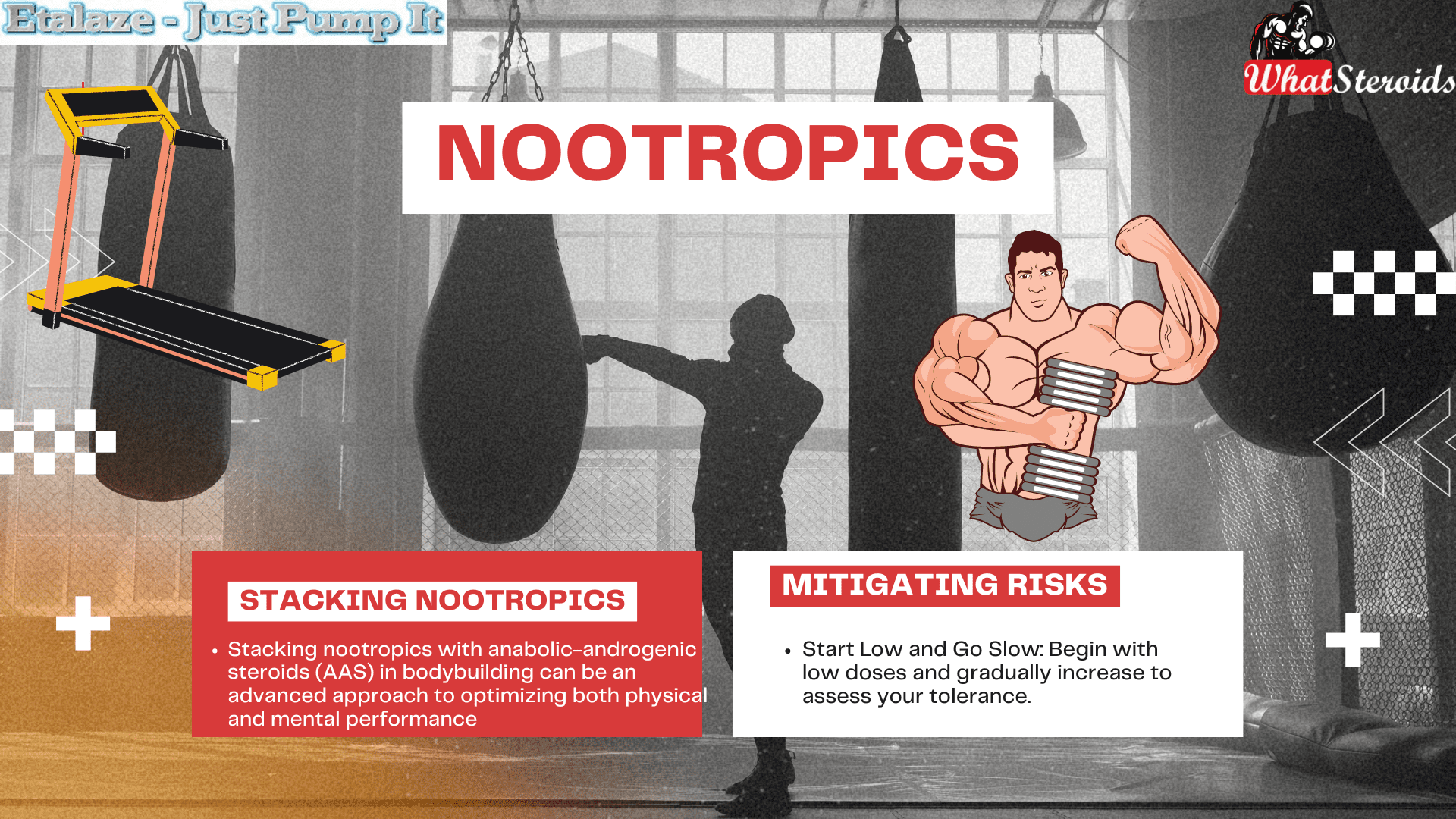
Nootropics in bodybuilding refer to supplements or substances that enhance cognitive functions such as focus, memory, motivation, and mental clarity. While traditional bodybuilding supplements focus on muscle growth, strength, and endurance, nootropics target the mental aspect of training. Improved focus and motivation can lead to better workouts, more consistent training, and ultimately better results.
Must Read: A New Caffeine? What You Need to Know about Teacrine
Here are some common nootropics used in bodybuilding:
Caffeine: Widely used for its stimulant effects, caffeine can boost energy, focus, and endurance during workouts.
L-Theanine: Often combined with caffeine, L-Theanine promotes relaxation without drowsiness, helping to balance out the jittery effects of caffeine.
Alpha-GPC: A source of choline that supports the production of acetylcholine, a neurotransmitter essential for cognitive function and muscle contraction.
Rhodiola Rosea: An adaptogen that helps reduce fatigue and improve mental resilience, making it useful for both physical and mental performance.
Bacopa Monnieri: Known for enhancing memory and reducing anxiety, Bacopa is popular for those who want to stay mentally sharp during intense training phases.
Lion’s Mane Mushroom: A natural nootropic that supports brain health, cognitive function, and reduces mental fatigue.
Phenylpiracetam: A racetam-class nootropic that is known for its stimulating effects and ability to enhance focus and mental energy, which can be beneficial during challenging workout sessions.
Stacking Nootropics With AAS
Stacking nootropics with anabolic-androgenic steroids (AAS) in bodybuilding can be an advanced approach to optimizing both physical and mental performance. Here’s a guide on how to combine these substances effectively:
Understanding the Purpose of the Stack
Combining nootropics with AAS aims to enhance not only muscle growth, strength, and recovery (which AAS focus on) but also mental aspects like focus, motivation, and mood (which nootropics address). This stack can help bodybuilders push through plateaus, manage training stress, and maintain peak performance.
Common Nootropics to Stack with AAS
Caffeine + L-Theanine: Enhances alertness and focus while reducing anxiety. Helps with energy and focus during intense workouts.
Alpha-GPC: Boosts acetylcholine levels, improving mental clarity and enhancing the mind-muscle connection.
Rhodiola Rosea: Mitigates stress and fatigue, which is crucial during heavy steroid cycles where physical and mental stress is higher.
Lion’s Mane Mushroom: Promotes cognitive health and neuroprotection, helping you stay sharp during longer cycles.
Bacopa Monnieri: Reduces anxiety and improves memory, supporting better recovery and relaxation outside the gym.
Tips for Stacking
Start with Lower Doses: If you’re new to either nootropics or AAS, start with minimal doses and gradually adjust based on how your body responds. Stacking too much too soon increases the risk of side effects.
Cycle Both Nootropics and AAS: Just like AAS, it’s wise to cycle nootropics to avoid tolerance buildup. For instance, you might use nootropics for 6-8 weeks and then take a break, aligning this cycle with your AAS cycle.
Prioritize Liver and Organ Health: Both nootropics and AAS can stress the liver and other organs. Incorporate liver support supplements like milk thistle, NAC (N-Acetyl Cysteine), and TUDCA (Tauroursodeoxycholic Acid).
Stay Hydrated and Maintain Proper Nutrition: Both nootropics and AAS can increase metabolic demands. Staying hydrated and following a nutrient-rich diet ensures better overall performance and health.
Related Article: Protein Powder Supplement Comparison – Which Type To Choose?
Sample Stack for a Cutting Phase
Nootropics: Caffeine + L-Theanine, Alpha-GPC, Rhodiola Rosea
AAS: Testosterone Propionate, Trenbolone Acetate, Anavar (Oxandrolone)
Support Supplements: Liver support (NAC, TUDCA), multivitamins, omega-3s
This stack can help maintain muscle mass, enhance focus and energy during workouts, and support mental well-being during calorie deficits.
Sample Stack for a Bulking Phase
Nootropics: Lion’s Mane, Bacopa Monnieri, Alpha-GPC
AAS: Testosterone Enanthate, Deca-Durabolin (Nandrolone Decanoate), Dianabol (Methandrostenolone)
Support Supplements: Joint support (collagen, glucosamine), digestive enzymes, liver support
This combination can boost cognitive function, improve recovery, and support the intense training needed for mass-building phases.
Stacking nootropics with AAS can offer significant benefits for bodybuilders aiming for peak mental and physical performance. However, it’s critical to approach this strategy with caution, considering the possible interactions and side effects. Always consult a healthcare professional before starting any stack, especially one involving AAS and nootropics.
Possible Side Effects Associated With Nootropics
While nootropics can enhance cognitive function, focus, and motivation, they can also cause side effects, especially when used in high doses or stacked with other supplements like anabolic-androgenic steroids (AAS). Some common side effects associated with nootropics in bodybuilding include:
1. Insomnia and Sleep Disturbances
Many nootropics, especially stimulants like caffeine, can lead to difficulties falling asleep or maintaining restful sleep. This is particularly problematic if taken late in the day, as sleep is critical for recovery and muscle growth.
2. Anxiety and Nervousness
Nootropics that stimulate the central nervous system (e.g., caffeine, phenylpiracetam) can increase anxiety, jitteriness, or nervousness, especially when combined with other stimulants or during periods of high stress.
3. Headaches
Certain nootropics, particularly racetams (like piracetam or aniracetam), can deplete choline levels in the brain, leading to headaches. Supplementing with choline sources like Alpha-GPC can help mitigate this side effect.
4. Gastrointestinal Issues
Some nootropics may cause nausea, stomach cramps, or diarrhea, especially if taken on an empty stomach or in high doses.
5. Mood Swings and Irritability
Nootropics that affect neurotransmitter levels (like dopamine or serotonin) can lead to mood swings, irritability, or even depressive symptoms if used improperly or if taken in combination with AAS, which can already impact mood.
6. Tolerance and Dependence
Frequent use of certain nootropics, particularly stimulants, can lead to tolerance, where increasing doses are needed to achieve the same effect. This can also result in dependence, where users feel they need the nootropic to function optimally.
7. Overstimulation
High doses or the wrong combination of nootropics can cause overstimulation, leading to symptoms like rapid heart rate, high blood pressure, and excessive sweating. This can be particularly risky during intense workouts.
8. Cognitive Fatigue or Brain Fog
In some cases, nootropics intended to boost focus or clarity can backfire, leading to cognitive fatigue or brain fog. This can happen due to overloading neurotransmitter pathways or poor dosing strategies.
9. Interactions with Other Supplements or Medications
Nootropics may interact with other bodybuilding supplements, medications, or AAS, leading to unexpected side effects. For example, combining stimulants like caffeine with pre-workouts or fat burners can amplify side effects like anxiety or heart palpitations.
10. Long-Term Safety Concerns
The long-term effects of many nootropics are not well-studied, especially when taken in high doses or combined with other substances. Chronic use could potentially lead to neurological imbalances or organ stress over time.
Mitigating Risks
Start Low and Go Slow: Begin with low doses and gradually increase to assess your tolerance.
Cycle Usage: Avoid using the same nootropics daily to prevent tolerance and dependence.
Stay Hydrated and Eat Well: Proper hydration and nutrition can reduce the risk of gastrointestinal and cognitive issues.
Monitor Your Response: Keep track of how you feel when taking nootropics and adjust accordingly if you notice negative side effects.
Consult a Professional: If you’re stacking nootropics with other substances like AAS, it’s essential to get medical advice to avoid harmful interactions.
While nootropics can offer cognitive and motivational benefits in bodybuilding, responsible use and monitoring are key to minimizing side effects.
Take Away
To conclude, nootropics can help bodybuilders maintain high levels of mental energy, motivation, and focus during training, which is essential for pushing through tough workouts and staying consistent with your fitness goals. However, as with any supplement, it’s important to research and consider potential side effects and interactions.
Don't Miss: Horse Chestnut and Other Supplements to Get Rid of Water Retention
Bodybuilding
How Effective is Bone Broth for Recovery?
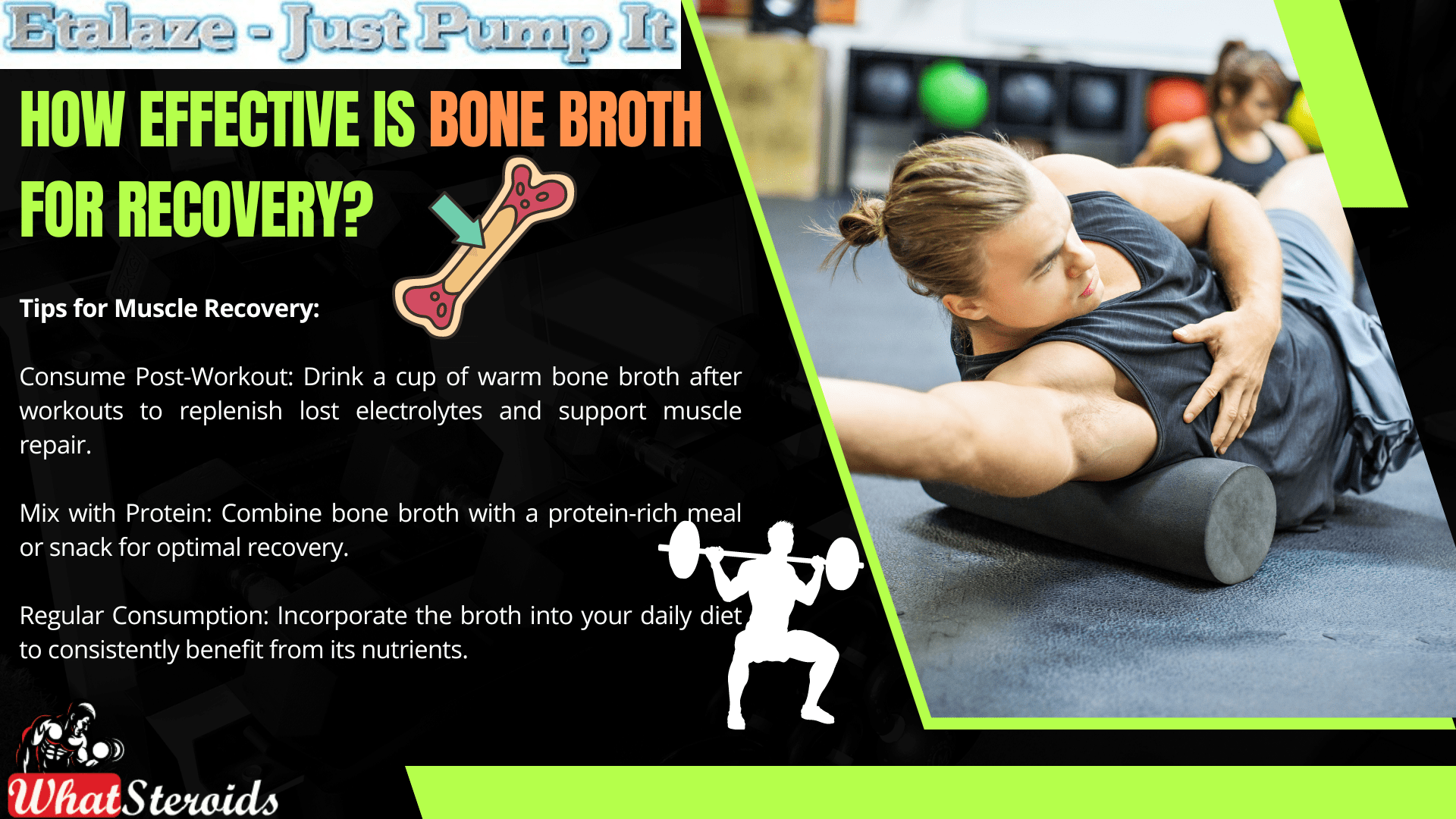
Bone broth has gained popularity in the fitness community, including among bodybuilders, due to its potential benefits for recovery. It is a nutrient-dense liquid made by simmering animal bones and connective tissues for an extended period. This process extracts a variety of beneficial compounds and nutrients. Here's how it is effective for post-workout recovery:
1. Bone Broth is Rich in Collagen and Gelatin:
Bone broth is high in collagen, a protein that supports joint, tendon, and ligament health. Gelatin, derived from collagen, may help reduce joint pain and inflammation, which is beneficial after intense workouts.
2. Amino Acid Profile:
Bone broth contains important amino acids like glycine, proline, and glutamine. These amino acids support muscle repair and growth, immune function, and gut health—all crucial for recovery.
3. Electrolytes and Hydration:
It provides electrolytes like potassium, magnesium, and calcium, which help with hydration and muscle function. Proper hydration is key to recovery and preventing cramps or muscle fatigue.
4. Mineral Content:
Bone broth is rich in essential minerals like calcium, phosphorus, and magnesium. These minerals contribute to bone health and muscle contraction, supporting recovery.
5. Anti-Inflammatory Properties:
The nutrients in the broth may help reduce inflammation, speeding up recovery and reducing soreness after workouts.
6. Supports Gut Health:
Bone broth can help heal and maintain the gut lining, which is important for nutrient absorption and overall recovery.
Must Read: Best supplements for College students
How to Prepare Bone Broth at Home
Preparing bone broth at home is straightforward and can be customized to fit your dietary needs for muscle recovery. Here’s a step-by-step guide:
Ingredients:
- Bones: Use a mix of beef, chicken, pork, or fish bones. Marrow bones, knuckles, and joints are especially rich in collagen.
- Vegetables (optional): Carrots, celery, onions, and garlic add flavor and nutrients.
- Vinegar: 1-2 tablespoons of apple cider vinegar help draw out minerals from the bones.
- Herbs and Spices (optional): Bay leaves, thyme, rosemary, and peppercorns for added flavor.
- Water: Enough to cover the bones and vegetables.
Instructions to Prepare Bone Broth
- Prepare the Bones:
- Roasting (optional but recommended): Roast the bones in the oven at 400°F (200°C) for 30-40 minutes. This enhances the flavor of the broth.
- Place Bones in a Pot:
- Transfer the bones to a large stockpot, slow cooker, or pressure cooker.
- Add Vegetables and Vinegar:
- Add your chosen vegetables and the apple cider vinegar to the pot. Vinegar is crucial as it helps extract the minerals from the bones.
- Cover with Water:
- Add enough water to cover the bones by about 2 inches. Avoid adding too much water, as it can dilute the broth.
- Cooking Time:
- Stovetop: Bring the water to a boil, then reduce the heat to a simmer. Cook for 12-24 hours. The longer you simmer, the more nutrients you extract.
- Slow Cooker: Set on low and cook for 12-24 hours.
- Pressure Cooker: Cook on high pressure for 3-4 hours.
- Skim the Foam:
- During the first hour of cooking, you might notice some foam rising to the top. Skim it off with a spoon to keep the broth clear.
- Add Herbs and Spices (optional):
- In the last hour of cooking, add any herbs or spices for flavor.
- Strain the Broth:
- Once the broth is done, strain it through a fine-mesh sieve or cheesecloth into another pot or large container to remove the bones and vegetables.
- Cool and Store:
- Let the broth cool. You can refrigerate it for up to 5 days or freeze it in portions for longer storage.
- Use the Broth:
- You can drink the broth as-is, use it as a base for soups or stews, or incorporate it into your post-workout meals.
Tips for Muscle Recovery:
Consume Post-Workout: Drink a cup of warm bone broth after workouts to replenish lost electrolytes and support muscle repair.
Mix with Protein: Combine bone broth with a protein-rich meal or snack for optimal recovery.
Regular Consumption: Incorporate the broth into your daily diet to consistently benefit from its nutrients.
Making the broth at home allows you to control the ingredients and flavor, ensuring a nutrient-rich recovery drink tailored to your needs.
Don't Miss: Chia Seeds in A Bodybuilder’s Diet: An Expert’s Advice
Incorporating Bone Broth In Your Diet
Incorporating bone broth into your bodybuilding diet can be both delicious and beneficial. Here are some creative ways to include it:
- Post-Workout Drink: Simply heat up a cup of bone broth and drink it after your workout. It’s a great way to replenish electrolytes and protein.
- Smoothies: Add a scoop of bone broth protein powder to your post-workout smoothie. It blends well with fruits and other ingredients.
- Soups and Stews: Use bone broth as a base for soups and stews. It’s an excellent way to add flavor and nutrients to your meals.
- Cooking Grains: Cook your rice, quinoa, or other grains in the broth instead of water. This enhances the flavor and nutritional content.
- Sauces and Gravies: Incorporate bone broth into sauces and gravies for added depth of flavor and health benefits.
- Marinades: Use bone broth as a base for marinades for meats and vegetables. It adds a rich flavor and helps tenderize the meat.
- Bone Broth Ice Cubes: Freeze bone broth in ice cube trays and add the cubes to your dishes as needed. This is a convenient way to add a nutritional boost to any meal.
- Bone Broth Tea: Mix bone broth with herbs and spices to create a savory tea. This can be a soothing and nutritious drink.
These methods can help you enjoy the benefits of bone broth while keeping your diet varied and interesting. Have you tried any of these methods before?
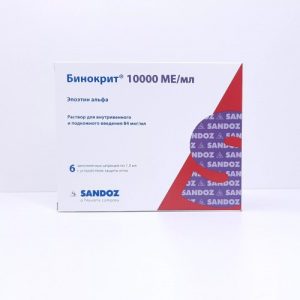 Click Here to Buy Binocrit EPO 10 000IU (6 pre-filled pens) by Sandoz
Click Here to Buy Binocrit EPO 10 000IU (6 pre-filled pens) by Sandoz
Which Animal's Bones Give the Best Broth?
Different animal bones can be used to make broth, each offering unique benefits for bodybuilding recovery. Here are some of the best options:
Beef Bones: Beef bones, especially marrow bones, knuckles, and joints, are rich in collagen and gelatin, which support joint health and muscle recovery. They also provide a deep, rich flavor and are packed with minerals like calcium and magnesium.
Chicken Bones: Chicken bones, particularly those from the feet and wings, are high in collagen and gelatin. Chicken broth is lighter in flavor but still rich in nutrients that aid in muscle repair and joint health.
Fish Bones: Fish bones, especially from oily fish like salmon, are excellent for a lighter broth that is rich in omega-3 fatty acids. These fatty acids have anti-inflammatory properties, which can help reduce muscle soreness and promote recovery.
Pork Bones: Pork bones, including the feet and hocks, are also good sources of collagen and gelatin. They produce a flavorful broth that can support joint and muscle health.
Lamb Bones: Lamb bones are another great option, providing a rich, flavorful broth that is high in collagen and minerals.
Each type of bone broth has its own unique flavor and nutritional profile, so you might want to try different ones to see which you prefer and which best supports your recovery needs.
Related Article: Essential Techniques to Master Squats Form
Overall
Can I use bone broth while on steroids? Yes, bone broth can be beneficial for bodybuilders who are using steroids or other supplements, as it provides essential nutrients that support overall health and recovery. Steroids and other performance-enhancing drugs often place additional stress on the body, particularly on the liver, kidneys, joints, and connective tissues. As mentioned, bone broth is rich in collagen, gelatin, amino acids like glycine and proline, and minerals such as calcium and magnesium, which help support joint health, reduce inflammation, and promote gut health. These benefits are especially important for bodybuilders using steroids, as these drugs can sometimes exacerbate joint pain, weaken connective tissues, or cause digestive issues.
Additionally, bone broth can help with hydration and provide electrolytes, supporting muscle function and recovery. While it shouldn't replace other key nutrients and should be used alongside a well-rounded diet and supplement regimen, bone broth can serve as a natural, nutrient-dense addition that helps mitigate some of the side effects of steroid use and enhances overall recovery and performance.
Bodybuilding
Calorie Dumping: A Bodybuilder’s Guide
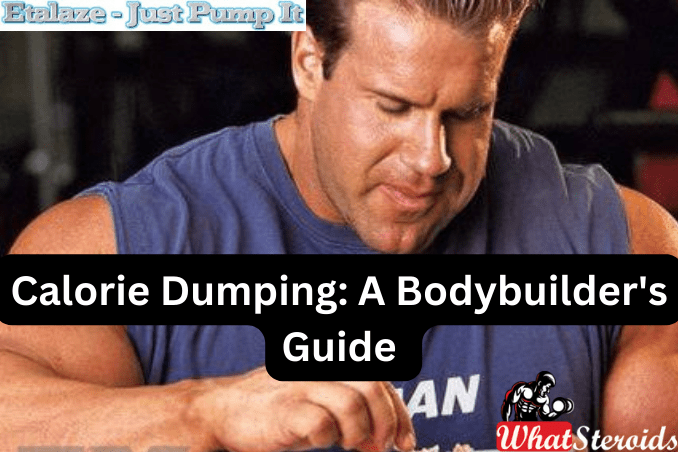
"Calorie dumping" in bodybuilding refers to a strategy where an individual consumes a large number of calories in a single meal, often following a period of low-calorie intake.
This practice is believed to support muscle growth by providing a surplus of energy and nutrients.
The idea is that after a period of restricted calorie intake, the body becomes more efficient at utilizing nutrients, making it more receptive to absorbing and utilizing the surplus calories in a short period.
However, this approach may not suit everyone and should be approached cautiously as it can lead to discomfort and potential digestive issues.
Calorie dumping, also known as refeeding or cycling calories, is sometimes preferred by bodybuilders to help prevent metabolic adaptation and aid in breaking through plateaus.
By occasionally consuming higher calorie levels, they aim to boost metabolism, replenish glycogen stores, and maintain hormone balance for better muscle growth and fat loss in the long term.
Bodybuilders focus on controlled nutrition plans to optimize muscle growth and minimize fat gain. However, occasionally, you might increase the calorie intake temporarily before an intense workout or competition to boost energy levels, but this isn't considered calorie dumping in the traditional sense.
ALSO READ: Your Guide to Become A Successful Personal Trainer
Long-term and Short-term Benefits of Calorie Dumping
Short-term benefits include replenishing glycogen stores, boosting metabolism, and providing mental relief from a strict diet.
Also known as a "refeed" or "cheat day," bodybuilders do calorie dumping for several long-term reasons:
Best Foods for Calorie Dumping
-

 Steroids2 years ago
Steroids2 years agoShavers and Other Body Grooming Equipment for Bodybuilders In 2023
-

 Steroids2 years ago
Steroids2 years agoChatGPT and Other Avenues to Find Great Bodybuilding Coaches
-

 Steroids2 years ago
Steroids2 years agoBest Oil Recommendations Before Competition for Subtle Shimmer
-

 Steroids2 years ago
Steroids2 years agoPowerlifting Vs Power Building: Find Out the Big Difference and When to Shift Between the Two
-

 Bodybuilding Products1 year ago
Bodybuilding Products1 year agoTelmisartan In Bodybuilding: An Expert’s Advice
-

 Nutrition2 years ago
Nutrition2 years agoEverything Nutritional Food: What’s Too Much Or Too Little
-

 Bodybuilding9 months ago
Bodybuilding9 months agoPrimal Movements: Our Ultimate Guide for Maximum Results
-

 Anabolic Steroids10 months ago
Anabolic Steroids10 months agoJoint Stiffness: How to Manage It While on AAS
-

 Steroids1 year ago
Steroids1 year agoAnadrol Cycle: Benefits, Doses, Alternatives, etc.
-

 Bodybuilding1 year ago
Bodybuilding1 year agoChia Seeds in A Bodybuilder’s Diet: An Expert’s Advice
-

 Anabolic Steroids1 year ago
Anabolic Steroids1 year agoLegality of Anabolic Steroids In Latin America
-

 Beginners2 years ago
Beginners2 years agoTren Cycle for Beginners
-

 Bodybuilding9 months ago
Bodybuilding9 months agoHow Effective is Bone Broth for Recovery?
-

 Steroids11 months ago
Steroids11 months agoOmnitope (Oxytocin)
-

 Bodybuilding1 year ago
Bodybuilding1 year agoHow Much Is Too Much Cardio? Understanding Heart Rate Zones
-

 Steroids10 months ago
Steroids10 months agoSleeping Positions for Effective Muscle Recovery
-

 Bodybuilding1 year ago
Bodybuilding1 year agoList of FDA-Approved Peptides
-

 Bodybuilding1 year ago
Bodybuilding1 year agoCalorie Dumping: A Bodybuilder’s Guide
-

 Bodybuilding8 months ago
Bodybuilding8 months ago2nd Edition of Natural Bodybuilding Competition Facts
-

 Bodybuilding2 years ago
Bodybuilding2 years agoCompetition Prep Cycle for Pro Bodybuilders
-

 Bodybuilding1 year ago
Bodybuilding1 year agoDemystifying Hypertrophy Training
-

 Bodybuilding9 months ago
Bodybuilding9 months agoAre Nootropics a Better Option to AAS?
-

 Steroids5 months ago
Steroids5 months agoOstarine For Beginners: The Ultimate Guide
-

 Anabolic Steroids12 months ago
Anabolic Steroids12 months agoHow Much Do You Know About B-AET? A Fat Burner You’ve Been Missing
-

 Product Reviews12 months ago
Product Reviews12 months agoTop Vitamins for Skin Health




